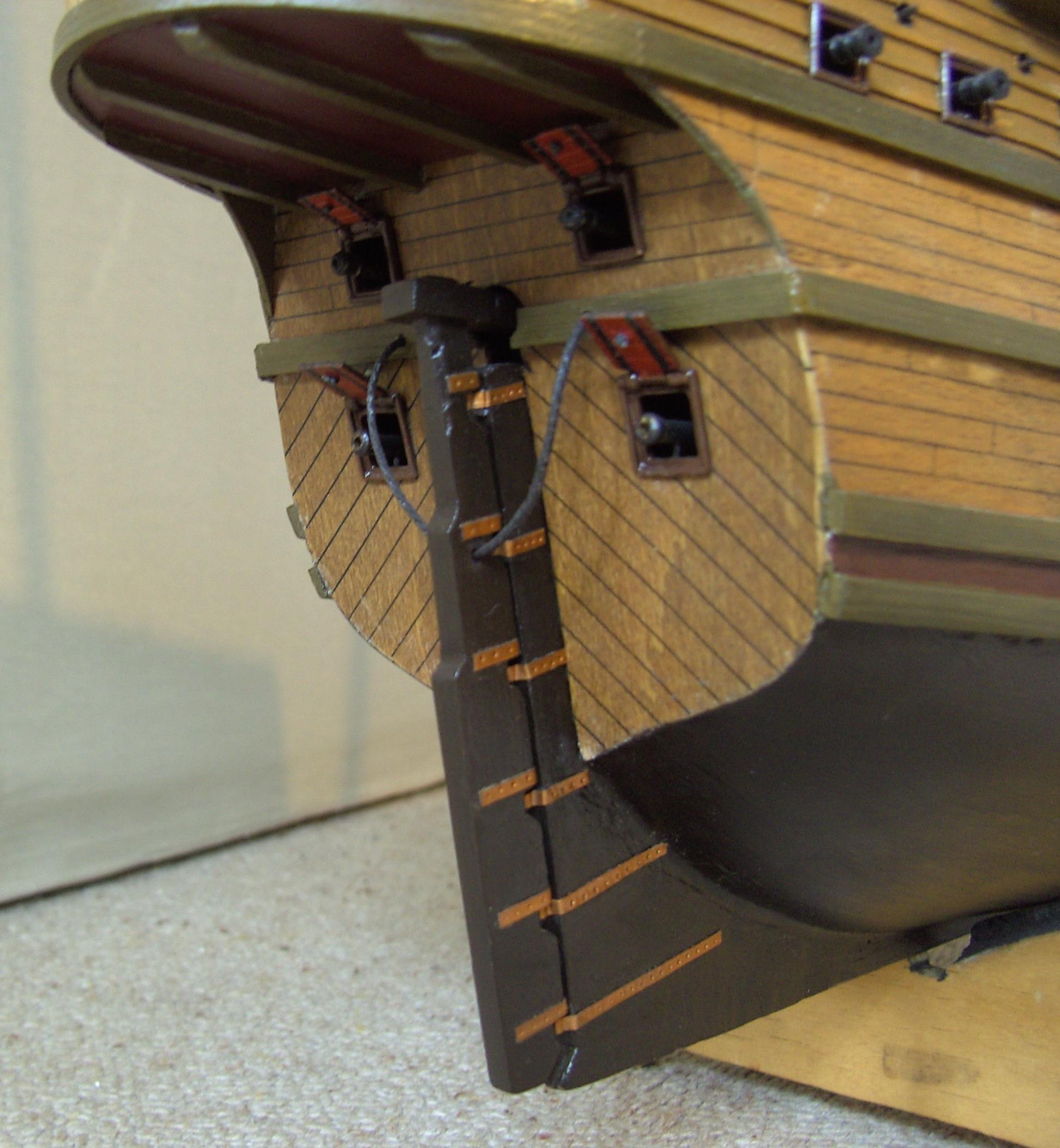|
Following Sea
A following sea refers to a wave direction that is similar to the heading of a waterborne vessel under way. The word "sea" in this context refers to open water wind waves. In the strict sense, a following sea has a direction of propagation between 15° either side of vessel heading, and has a celerity that does not exceed the velocity of the vessel in the direction of wave propagation. If the wave moves faster than the vessel it is an overtaking sea. If the angle to vessel heading is more than 15° it may be a quartering sea. Usage Sailors use this term synonymously with the points of sail A point of sail is a sailing craft's direction of travel under sail in relation to the true wind direction over the surface. The principal points of sail roughly correspond to 45° segments of a circle, starting with 0° directly into the wind. ... below a beam reach, since the wind direction is generally the same as the sea direction. Therefore, the phrase "Fair winds and following seas," ... [...More Info...] [...Related Items...] OR: [Wikipedia] [Google] [Baidu] |
Wind Waves
In fluid dynamics, a wind wave, water wave, or wind-generated water wave, is a surface wave that occurs on the free surface of bodies of water as a result from the wind blowing over the water surface. The contact distance in the direction of the wind is known as the '' fetch''. Waves in the oceans can travel thousands of kilometers before reaching land. Wind waves on Earth range in size from small ripples, to waves over high, being limited by wind speed, duration, fetch, and water depth. When directly generated and affected by local wind, a wind wave system is called a wind sea. Wind waves will travel in a great circle route after being generated – curving slightly left in the southern hemisphere and slightly right in the northern hemisphere. After moving out of the area of fetch, wind waves are called '' swells'' and can travel thousands of kilometers. A noteworthy example of this is waves generated south of Tasmania during heavy winds that will travel across the Paci ... [...More Info...] [...Related Items...] OR: [Wikipedia] [Google] [Baidu] |
Phase Velocity
The phase velocity of a wave is the rate at which the wave propagates in any medium. This is the velocity at which the phase of any one frequency component of the wave travels. For such a component, any given phase of the wave (for example, the crest) will appear to travel at the phase velocity. The phase velocity is given in terms of the wavelength (lambda) and time period as :v_\mathrm = \frac. Equivalently, in terms of the wave's angular frequency , which specifies angular change per unit of time, and wavenumber (or angular wave number) , which represent the angular change per unit of space, :v_\mathrm = \frac. To gain some basic intuition for this equation, we consider a propagating (cosine) wave . We want to see how fast a particular phase of the wave travels. For example, we can choose , the phase of the first crest. This implies , and so . Formally, we let the phase and see immediately that and . So, it immediately follows that : \frac = -\frac \frac = \fr ... [...More Info...] [...Related Items...] OR: [Wikipedia] [Google] [Baidu] |
Overtaking Sea
__NOTOC__ M N O P Q R ... [...More Info...] [...Related Items...] OR: [Wikipedia] [Google] [Baidu] |
Quartering Sea
__NOTOC__ M N O P Q R ... [...More Info...] [...Related Items...] OR: [Wikipedia] [Google] [Baidu] |
Points Of Sail
A point of sail is a sailing craft's direction of travel under sail in relation to the true wind direction over the surface. The principal points of sail roughly correspond to 45° segments of a circle, starting with 0° directly into the wind. For many sailing craft 45° on either side of the wind is a ''no-go'' zone, where a sail is unable to mobilize power from the wind. Sailing on a course as close to the wind as possible—approximately 45°—is termed ''beating'', a point of sail when the sails are ''close-hauled''. At 90° off the wind, a craft is on a ''beam reach''. The point of sail between beating and a beam reach is called a ''close reach''. At 135° off the wind, a craft is on a ''broad reach''. At 180° off the wind (sailing in the same direction as the wind), a craft is ''running downwind''. A given point of sail (beating, close reach, beam reach, broad reach, and running downwind) is defined in reference to the true wind—the wind felt by a stationary observe ... [...More Info...] [...Related Items...] OR: [Wikipedia] [Google] [Baidu] |
United States Department Of The Navy
The United States Department of the Navy (DoN) is one of the three military departments within the Department of Defense of the United States of America. It was established by an Act of Congress on 30 April 1798, at the urging of Secretary of War James McHenry, to provide a government organizational structure to the United States Navy (USN);Bernard C. Steiner and James McHenry, The life and correspondence of James McHenry' (Cleveland: Burrows Brothers Co., 1907). since 1834, it has exercised jurisdiction over the U.S. Marine Corps (USMC) and, during wartime, the U.S. Coast Guard (USCG), though each remains an independent service branch. It is led by the Secretary of the Navy (SECNAV), a statutory civilian officer. The Department of the Navy was an executive department, whose secretary served on the president's cabinet, until 1949, when amendments to the National Security Act of 1947 established the Department of Defense as a unified department for all military services; ... [...More Info...] [...Related Items...] OR: [Wikipedia] [Google] [Baidu] |
Naval Historical Center
The Naval History and Heritage Command, formerly the Naval Historical Center, is an Echelon II command responsible for the preservation, analysis, and dissemination of U.S. naval history and heritage located at the historic Washington Navy Yard. The NHHC is composed of 42 facilities in 13 geographic locations including the Navy Department Library, 10 museums and 1 heritage center, USS ''Constitution'' repair facility and detachment, and historic ship ex-USS ''Nautilus''. Command history The Naval History and Heritage Command traces its lineage to 1800, when President John Adams requested Benjamin Stoddert, the first Secretary of the Navy, prepare a catalog of professional books for use in the Secretary's office. When the British invaded Washington in 1814, this collection, containing the finest works on naval history from America and abroad, was rushed to safety outside the Federal City. After that, the library had many locations, including a specially designed space in the St ... [...More Info...] [...Related Items...] OR: [Wikipedia] [Google] [Baidu] |
Sailing
Sailing employs the wind—acting on sails, wingsails or kites—to propel a craft on the surface of the ''water'' (sailing ship, sailboat, raft, windsurfer, or kitesurfer), on ''ice'' (iceboat) or on ''land'' (land yacht) over a chosen course, which is often part of a larger plan of navigation. From prehistory until the second half of the 19th century, sailing craft were the primary means of maritime trade and transportation; exploration across the seas and oceans was reliant on sail for anything other than the shortest distances. Naval power in this period used sail to varying degrees depending on the current technology, culminating in the gun-armed sailing warships of the Age of Sail. Sail was slowly replaced by steam as the method of propulsion for ships over the latter part of the 19th century – seeing a gradual improvement in the technology of steam through a number of stepwise developments. Steam allowed scheduled services that ran at higher average speeds than sai ... [...More Info...] [...Related Items...] OR: [Wikipedia] [Google] [Baidu] |

.gif)


.png)

